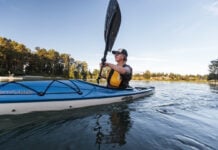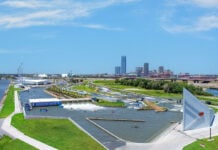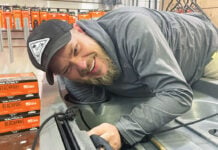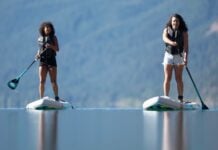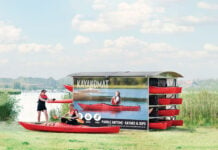Last summer, my family went canoe tripping in Quetico Provincial Park, the vast wilderness connected to Minnesota’s popular Boundary Waters Canoe Area Wilderness (BWCAW) and long known as Canada’s canoeing capital. We did something unusual for Canadians. We entered through the United States, setting off from Ely, Minnesota, and portaging across the international border back into Canada at Prairie Portage.
Because Quetico borders the BWCAW and is closer to U.S. population centers like Minneapolis than it is to any Canadian cities, like my Toronto home a two-day drive away, it’s southern portion is busiest, sometimes notoriously so. Our guidebook warned us to expect hours-long wait times at the park entry station, and the sight of hundreds of canoes. We steeled ourselves for legions of Americans, just hoping we could escape deep into the park as quickly as possible. We were pleasantly surprised to arrive at the park office and find nobody, save one very relaxed-looking park ranger.
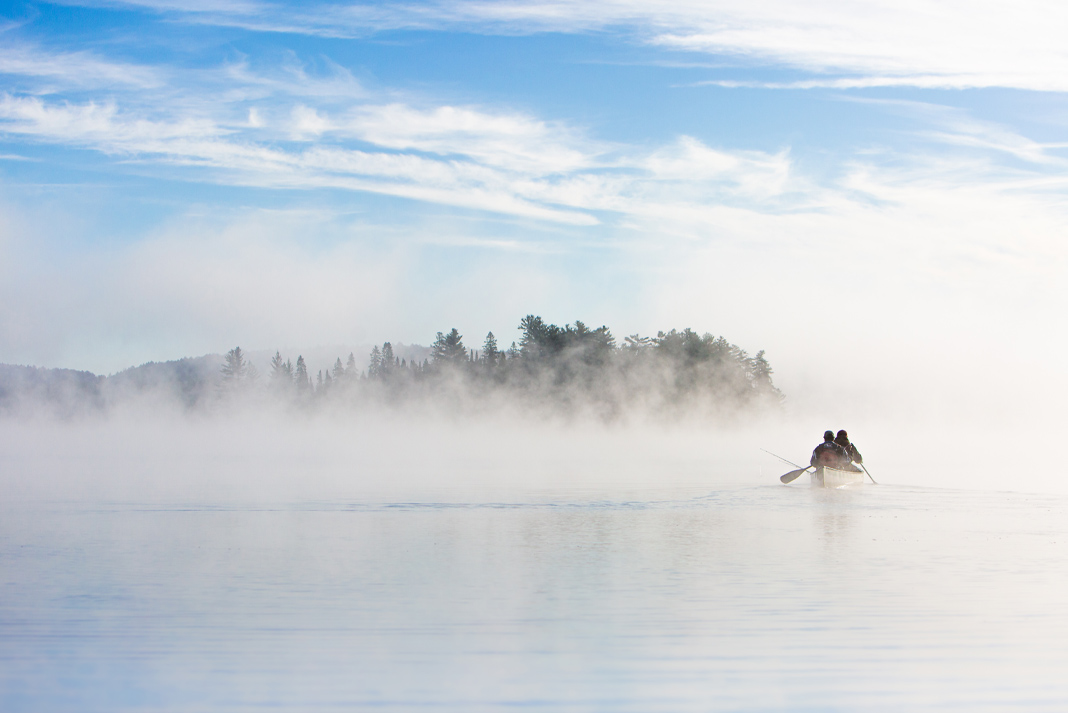
“You’re the first Canadians I’ve checked in all season,” she exclaimed. This was late August. I explained how I’d expected to fight off hordes.
“Oh, it doesn’t get like that much anymore,” she said. “We don’t like to talk about it, but visitor numbers have been going down for years.”
Really?
A conspiracy to hide a precipitous decline in visitors to one of North America’s iconic canoe destinations? Sounded like a story I should dig into.
Changes in backcountry tripping
In the winter, I followed up with Quetico’s young and friendly park superintendent, Trevor Gibb. But I quickly discovered there’s no secret plan to hide plummeting visitation. Gibb freely admits numbers are down a tad over recent years, but not alarmingly so.
“Historically, there were more people who paddled in Quetico,” he told me over the phone. “The last half-decade or so it’s been relatively stable. There’s not currently a downward trend or an upward trend.”
What’s more likely is wilderness visits track other economic and demographic trends. It appears more people are piling into wilderness areas for short trips closer to home.
Ontario Parks provided me with backcountry visitor numbers for 17 parks over the decade leading up to 2018. Total backcountry visits were up about 16 percent in 2017. They dropped a few percentage points in 2018 due to wildfires. Still, this growth was overwhelmingly driven by parks within a few hours’ drive of major cities, while remote northern parks remained relatively stable or declined.
Quetico, the busiest northern park, reported 69,000 backcountry visits in 2009 and hasn’t caught up to this number since. Visits from 2009 to 2014 dropped a rather alarming 18.5 percent—possibly due to the 2008 financial crisis’ effect on the park’s majority U.S. visitors. After 2014, however, numbers climbed again, tracking a rise in the U.S. dollar, but only as high as 61,433 last year.
Meanwhile, The Massasauga, a backcountry canoe destination two and a half hours north of Toronto, is 36 times smaller than Quetico and booming, with visits up 71 percent in the 10 years ending 2018. Kawartha Highlands, a newly operating park even closer to the city, is up a whopping 186 percent since it started record-keeping in 2011.
All this supports what many of us would expect—that with our busy, hyper-scheduled lives, wilderness trips are getting shorter. While interest in backcountry travel remains high, people doing shorter trips don’t want to drive as far. You can’t blame them since, according to the Outdoor Industry Association, people already spend about 1.5 times as many hours preparing to paddle as they do paddling—the average paddle in 2018 lasted only four hours, with six hours of prep and travel time.
Add to this the trend of YouTube tutorials and Instagram influencers making the wilderness more accessible and attractive, and population pressure appears to be overloading nearby destinations while the barrier to access farther-away wilderness remains too high to relieve the pressure. It’s a strong case for the importance of having large parks and wilderness areas close to where people live.
On a snowy Tuesday in early March, Ted East of Killarney Outfitters reports his phone is ringing off the hook. “I checked my phone log, we’ve had 92 phone calls today, and we’re closed.” Regarding the Killarney Provincial Park reservation website, he says, “Pick a date in mid-July and try to find an empty spot. It’s solid reservations across the board.”
“I bought 40 extra canoes this year. I have increased my canoe rentals by 5,000 days in 10 years. I think it’s happening industry-wide. If you want a finger on the pulse of what’s going on in ‘I want to sleep outside tonight,’ it’s increasing,” says East.
Meanwhile, across the border, U.S. outfitters in the busy Adirondacks Park—which offers backcountry camping in an area the size of Vermont and a four-hour drive from Boston and New York—are equally busy.
Dave Cilley publishes paddling guidebooks and has been running St. Regis Canoe Outfitters in Saranac Lake for 36 years. “Overall, the trend has not necessarily been fewer people but shorter trips. Our average trip right now is probably between two and three days.”
In nearby Tupper Lake, another veteran outfitter, Rob Frenette, has run Raquette River Outfitters for 38 years. “It’s just been one continual rise, every year more people,” he says. All the while, he’s been riding a roller coaster of changes brought on by technology and social trends. “Every year there’s some surprise, there’s a new demand you haven’t thought of before”—be it delivering boats to people’s Airbnb rentals or consoling smartphone-induced weather phobias.
“People are booking for the weekend on a Wednesday and canceling on a Friday based on what they see on their phone. If it’s 100 percent chance of rain, but it’s only 0.01 of an inch, all that means is there’s a shower going through at some point.”
The key to getting these people outside, he suggests, is to teach them how to read a forecast.
Inspiring the next generation
Amidst all these changes, Cilley says he wouldn’t be surprised if the interest in longer canoe trips starts to rebound. At home in the Adirondacks, he and Frenette both see the Northern Forest Canoe Trail, 740 miles of waterways stretching from New York to Maine which celebrates its 20th birthday this season, attracting more people with bucket-list aspirations, section-paddling the trail over years.
But as the demographic who embraced two- or three-week canoe trips—those back-to-the-land baby boomers—age out of activity, the key will be to replace them with a new generation of youth, which so far isn’t showing great interest in getting outside.
“The overall picture of outdoor participation was not promising,” concluded the Outdoor Foundations’ 2019 Outdoor Participation Report, which found kids went on 15 percent fewer outdoor recreation outings in 2018 than they did in 2012. “This historical downward trend indicates Americans will likely continue spending less time outdoors, especially with intensifying external barriers, such as work and family demands as well as technology and cost of entry.”
Hopefully, this will change, because as the outfitter Frenette observes, once families get outside, the cost-benefit ratio is huge.
“Take the kids to an amusement park and you’re shelling out money all day,” he says. “Put them in a canoe and it’s a relatively inexpensive way to do some cool things. Kids are putting the phone down, and they’re looking at flowers and snakes and frogs. It’s such a stress relief. People will come up in their city mode of mind, and after just three days, they’ll come back all smiling, happy and relaxed.”
COMING TO AN EMPTY CAMPSITE NOT NEAR YOU. | Photo: FOLLOW ME NORTH PHOTOGRAPHY



